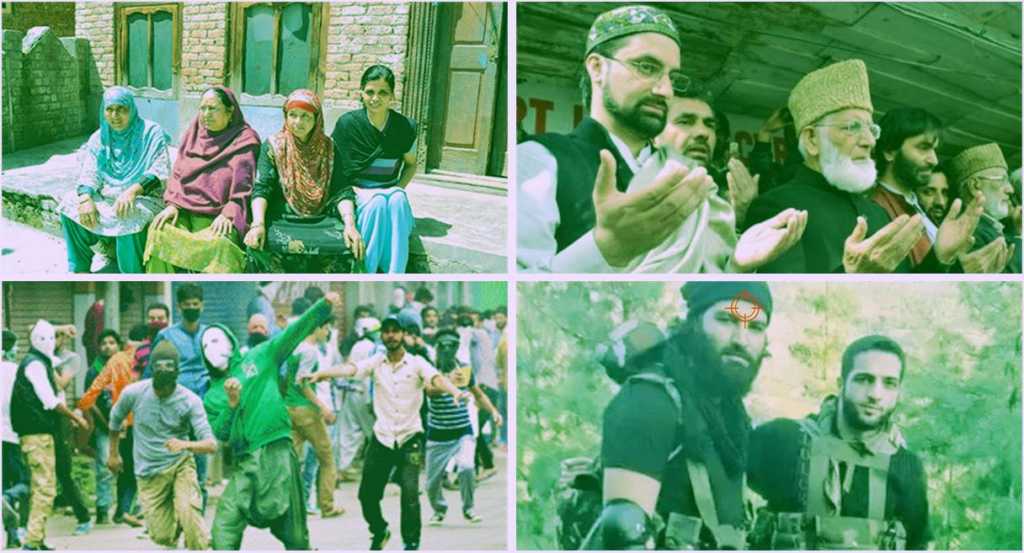Former Prime Minister Atal Behari Vajpayee is credited with popularizing the word ‘Kashmiriyat’ through his ‘Insaniyat, Jamhooriyat, Kashmiriyat’ speech in Srinagar in April 2003. Presumably, Vajpayee was referring to a common, shared Kashmiri culture which cut across religious and regional boundaries. Secularism, it implied was the hallmark of Kashmiriyat. What was strange about Vajpayee’s speech was that it was coming around a decade and a half after Kashmiri Pandits had been forced to flee the valley with doors shut firmly in their face.
At the time of his speech, there seemed little or no chance of Kashmiri Pandits being welcomed back, a situation which holds true even today. Kashmiri Muslims, while they publicly moan the flight of Pandits, are privately content at not having to struggle for resources and domination with the Pandits who for ages were the socially and economically dominant community. And so, while lofty ideals of Kashmiriyat are frequently invoked, they are nothing put hollow shells, a meaningless collection of words that sound politically correct but are nothing more than that.
Over the last several decades, Kashmir valley has been cleansed of its Hindu population. Attempts are now underway to remove the last vestiges of Kashmir’s Hindu past. Gopadri hill on which Shankaracharya temple has stood for millennia is now called Takht-e-Suleiman. Hari Parbat, which houses Hindu and Sikh temples is now referred to as Koh-e-marran, the mountain of snakes, the town of Anantnag, the site of ancient Martand temple is popularly called Islamabad and Srinagar, the capital city, named after Goddess Lakshmi, is known by its Mughal name of Sheher-e-Khaas. Amidst all the name change and demographic change, there has been one constant.
Baba Amarnath Yatra, a pilgrimage to a naturally occuring Shivling has been going on for centuries if not more. Pilgrims from across the country take part in the arduous trek only to seek Darshan and blessings from Lord Shiva in the form of Baba Amarnath. Every year, terrorists and Separatists threaten to disrupt the yatra and yet the yatra takes place, increasingly, under the protection of our armed forces. Not even the fear of being killed at the hands of terrorists in a land far away from home has failed to dampen the pilgrims’ devotion.
The fact that Amarnath yatra has continued uninterrupted through all the turmoil is frequently invoked as an example of Kashmiri’s inherent secular credentials, its Kashmiriyat that has survived militancy, secessionism and global jihad.
At least that’s what mainstream media would have us believe. The reality is far different.
On 10th July, one group of pilgrims returning from Amarnath darshan came under attack by terrorists. They were subsequently rescued by the security forces but not before many 7 pilgrims, including 6 women were killed in cold blood and many others were critically injured.
As the bus came under attack, panicked pilgrims sought help from the shopkeepers nearby. Far from being extended aid and succour, the shopkeepers laughed at the pilgrims’ plight. Perhaps they thought the kaffirs deserved what they were getting. Exactly one day before, another bus travelling on the same spot was pelted with stones by Kashmiri teenagers.
This is the reality of Kashmiriyat today. The secular Kashmiriyat invoked by poet turned politician Vajpayee was nothing more than a fantasy of his creative mind. Kashmiriyat is nothing more than Islamiyat that aims at the annihilation of Kaffirs and the complete domination of Islamic ummah. What else can explain the attacks on defenceless pilgrims? Why would the bystanders, irrespective of their religion not rush to extend help to those injured in the terror attack. Why would teenage boys pelt a bus full of pilgrims with stones?
There is only one possible explanation- the bloody Kaffirs deserved it!
Even before Vajpayee’s invocation of Kashmiriyat, to most neutral observers it was long clear that Kashmiriyat was long dead, if not merely a figment of someone’s imagination.
34 Sikh men and boys were killed by militants at Chittisinghpora in 2000. In 1998, at Wandhama, 10 men, 9 women and 4 children, all Kashmiri Pandits were gunned down at Wandhama. Way back in 1989, the 300 year old Baba Reshi shrine was gutted in fire. Around the same time, the first Kashmiri Pandit, Tika lal Taploo was shot dead in broad daylight. One Pandit had nails hammered in the place where he used to apply Tilak. Another was killed and his wife made to eat rice soaked in his blood. Pandit women were gangraped and killed with impunity. Where was ‘Kashmiriyat’, then? Where was Kashmiriyat when Pandits’ colonies come under attack every now and then. Where was Kashmiriyat when Kashmiris rose up in arms against the government’s decision to transfer forest land to Amarnath Board to set up amenities for pilgrims.
So, respected Home Minister, Shri Rajnath Singh, it is fine that you wish to sing paens to the glory of Kashmiriyat. It is fine that you wish to keep your eyes closed and talk about Kashmiriyat even in the face of overwhelming evidence to the contrary. It is fine that you think chanting Kashmiriyat will rid Kashmir of the cancer of global Jihad. But do not expect others to be fooled as you have allowed to be fooled yourself. Remember, India is watching very closely and people will compare your statements before and your actions after 2014.
